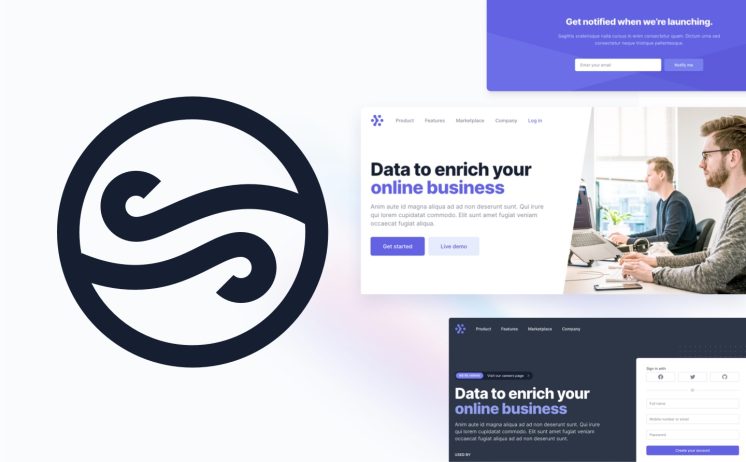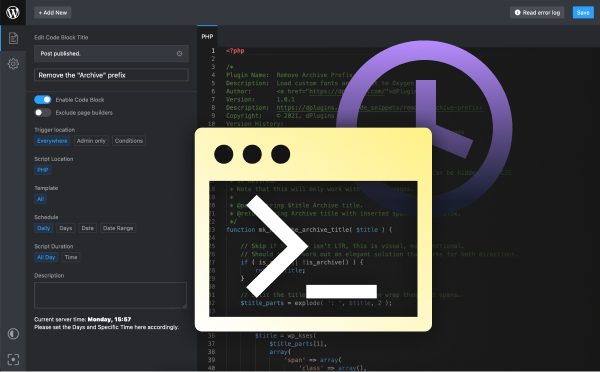Gutenberg blocks are one of the most powerful tools available to developers building WordPress websites. Gutenberg blocks are modular components that can be used to create custom layouts and designs for any WordPress website. The great thing about Gutenberg blocks is that they can be created using plain JavaScript, allowing developers to create highly customized WordPress sites without needing to learn a complicated programming language. With a few lines of code, developers are able to create stunning designs that are only limited by their own creativity. In this article, we will explore the basics of Gutenberg blocks and how to create them using plain JavaScript.
How to Create Your Own Gutenberg Blocks with Plain JavaScript .
Are you ready to create your own Gutenberg blocks with plain JavaScript? With the power of the Gutenberg editor, WordPress developers can now create powerful, dynamic websites with ease. And, with the introduction of custom blocks, the possibilities are limitless. Creating your own blocks with plain JavaScript is surprisingly easy. All you need to do is write a few lines of code to define the block’s properties and functions. Once you’re done, you can add it to your WordPress site and start using it right away. The best part is that you don’t even need to be a JavaScript expert to create your own blocks. Even if you’re just starting out with coding, you can still create amazing blocks with just a few simple lines of code. You can find plenty of tutorials online to help you get started. To make your blocks even more powerful, you can also use popular libraries like React or Angular. This way, you can add interactivity and other features that would make your blocks even more dynamic. So, what are you waiting for? With the help of the Gutenberg editor and a few lines of code, you can create amazing custom blocks that can take your WordPress site to the next level. Get creative and start coding today!
Building Responsive, Interactive Gutenberg Blocks with Plain JavaScript .
Creating amazing and interactive Gutenberg blocks with plain JavaScript is an exciting and rewarding experience. With the power of JavaScript, you can easily unlock a whole new level of creativity for your WordPress site. Using JavaScript to create blocks for Gutenberg can be intimidating at first, but with a little practice and some experimentation, you can quickly master the basics. With the help of modern tools and libraries, the process can be even easier. When creating blocks for Gutenberg, you are free to use the full power of JavaScript. This means you can create anything from simple buttons to complex sliders and interactive components. No matter what kind of block you’re building, you can create something that’s responsive and interactive. The best part about creating blocks with JavaScript is that you don’t need to be an expert coder to get started. With the help of modern libraries, you can quickly create powerful and dynamic blocks without needing to write a lot of code. And with a few tweaks, you can even make your blocks responsive, so they look great on any device. By using the power of JavaScript and modern libraries, you can create amazing blocks for Gutenberg that will make your WordPress site stand out from the crowd. So, go ahead and give it a try! You’ll be surprised at what you can create with a little bit of creativity and JavaScript.
Adding Custom Styles to Your Gutenberg Blocks with Plain JavaScript .
Are you looking for a way to make your Gutenberg blocks stand out? With a couple of lines of plain JavaScript, you can easily add custom styles to your blocks and make them look unique. Adding custom styles to your Gutenberg blocks can give your content a unique and creative flair. Whether it’s a border or a background color, a custom style can make your blocks look professional and unique. With just a few lines of JavaScript, you can easily customize the look and feel of your blocks. You can use the style attribute to add a unique style to your blocks. For example, you can add a border radius to your block, or make your block have a specific width or height. You can also add custom classes to your blocks using the className parameter. This will allow you to create custom styles for your blocks using CSS. This is great for creating a unique look for your blocks that matches the overall design of your website. Adding custom styles to your Gutenberg blocks with plain JavaScript is a great way to give your content a unique and creative flair. With just a few lines of code, you can easily create a look for your blocks that is both professional and visually appealing. So why not give it a try today?
Creating Animations for Your Gutenberg Blocks with Plain JavaScript .
Creating animations for your Gutenberg blocks with plain JavaScript can be a great way to bring your WordPress content to life. With the power of JavaScript, you can make your content more interactive and engaging for your users. Animated blocks can add a layer of visual interest to your WordPress site, helping to draw attention to important content and encourage users to interact with it. Not only can animations make your content more visually appealing, but they can also improve the overall user experience. Creating animations for your Gutenberg blocks doesn’t have to be complicated. Working with plain JavaScript makes the process simple and straightforward. With just a few lines of code, you can create stunning animations that will engage your users and make your content more appealing. The best part is that you don’t need to be an experienced JavaScript programmer to get started. There are plenty of helpful tutorials available online that will walk you through the process. Once you’ve mastered the basics, you’ll be able to create beautiful animations for your Gutenberg blocks that will take your WordPress site to the next level. So don’t hesitate – start creating animations for your Gutenberg blocks with plain JavaScript today! With just a few lines of code, you can create amazing animations that will make your content stand out and draw in more users. Let your creativity shine and make your WordPress site come alive with animation!
Accessing WordPress Data in Your Gutenberg Blocks with Plain JavaScript .
Are you excited about the possibilities of Gutenberg Blocks for WordPress? Are you looking for a way to access WordPress data in your custom blocks? If so, then you’re in luck! With a little bit of Plain JavaScript, you can easily access WordPress data and use it in your blocks. Gutenberg Blocks provide WordPress users with an incredibly powerful way to create custom content. With Plain JavaScript, you can take your blocks to the next level by connecting them to WordPress data. This means you can use your blocks to display posts, pages, users, comments, and more. Getting started is easy. All you need to do is add a script tag to your block code. Within this script tag, you can use the WordPress REST API to access data and use it in your block. You can even use the API to create, update, and delete content. The possibilities are endless when you combine the power of Gutenberg Blocks with Plain JavaScript. You can create custom blocks that show dynamic data, create interactive content, and much more. So don’t be intimidated by the technical aspects of creating custom blocks. With the help of Plain JavaScript, you can access WordPress data and use it in your blocks. Showcase your creativity, and make your blocks stand out from the crowd!
Customizing and Extending Gutenberg Blocks with Plain JavaScript .
Do you want to take your WordPress experience to the next level? Do you want to customize and extend the functionality of the new Gutenberg block editor? Look no further than plain JavaScript! With plain JavaScript, you can unlock the power of the Gutenberg block editor, letting you customize and extend it to your exact needs. Whether you’re an experienced developer or a beginner, you can use JavaScript to create innovative and powerful experiences. You can use plain JavaScript to create custom blocks, add reusable components, and even to integrate your own custom APIs into the editor. You can also use it to create custom block templates, or to add new features. It doesn’t matter what level of experience you have with JavaScript—it’s an incredibly powerful language that can be used for a wide range of projects. With the right knowledge, you can quickly customize and extend Gutenberg blocks to make them your own. So, if you’re ready to take your WordPress experience to the next level, start exploring the possibilities of plain JavaScript and the Gutenberg block editor today! With the right tools and knowledge, you can open up a whole new world of possibilities for your WordPress website.
Debugging Gutenberg Blocks with Plain JavaScript .
Are you looking for a way to debug Gutenberg blocks written with plain JavaScript? If so, you’ve come to the right place! Debugging blocks written in plain JavaScript can be a daunting task, but with the right approach, you’ll be able to make the process easier and more efficient. First, you’ll want to make sure that you have a strong understanding of the JavaScript language. This will give you the necessary foundation to debug your blocks. Once you have a strong grasp of the language, you can begin to break down your blocks and identify any potential issues. Next, you’ll want to make sure that you have a good debugging tool. The best way to debug your blocks is with a browser-based debugger such as Chrome or Firefox. You can use these tools to step through your code and see what’s happening behind the scenes. This will allow you to pinpoint any errors and fix them quickly. Finally, you’ll want to use good coding practices when writing your blocks. This means adhering to the best practices of the language and using descriptive variable names. By following these guidelines, you’ll be able to easily identify any bugs or issues in your code. Debugging Gutenberg blocks written with plain JavaScript can be a challenging task. But with the right tools and knowledge, you can make the process easier and more efficient. So don’t be intimidated—take the time to learn the language and equip yourself with the right debugging tools, and you’ll be ready to debug your blocks in no time!
Testing Gutenberg Blocks with Plain JavaScript .
Gutenberg Blocks have revolutionized the world of web development, allowing developers to quickly and easily build beautiful, interactive websites. With Plain JavaScript, developers can now create custom Gutenberg Blocks to enhance the user experience and create engaging content. The possibilities are truly endless! With Plain JavaScript, Gutenberg Blocks can be used to create dynamic content, interactive elements, and more. You can create custom Gutenberg Blocks to add a unique touch to your website and make your content stand out from the rest. Gutenberg Blocks are truly empowering. With them, you can create something unique and amazing, something that can connect with your audience and make your website truly interactive. So don’t be intimidated by Plain JavaScript. Embrace it and use it to create incredible Gutenberg Blocks that will take your website to the next level. Let your creativity shine and show the world what you can do with Plain JavaScript and Gutenberg Blocks.
Integrating Third-Party APIs with Gutenberg Blocks Using Plain JavaScript.
As the world of web development evolves, so do the ways in which we can create and develop our websites. One of the most exciting advances in recent years is the introduction of Gutenberg Blocks for WordPress, which are a powerful way to customize the user experience of a WordPress website. Gutenberg Blocks allow us to create and customize a wide range of content, from images and videos to text and more. But what if we want to introduce more complex features, such as third-party APIs, into our website? This is where the power of Plain JavaScript comes in. With the help of Plain JavaScript, we can integrate third-party APIs with our Gutenberg Blocks to create a truly dynamic and interactive user experience. The process begins by adding an API call to the JavaScript file that powers the Gutenberg Block. This is done by using a library such as Axios. Once the API call is complete, the data returned can then be used to populate the Gutenberg Block with the necessary information. For example, if you are creating a Gutenberg Block for a weather forecast, the API call will return the current temperature and other related information. Once the data is returned, it can then be used to populate the Gutenberg Block with the necessary information. The possibilities of Plain JavaScript and Gutenberg Blocks are truly endless. With a little bit of creativity and imagination, you can create a truly unique and engaging user experience for your website visitors. So, whether you are creating a simple blog post or a complex website, integrating third-party APIs with Gutenberg Blocks using Plain JavaScript can help you take your website to the next level. Don’t be afraid to explore the possibilities!
Gutenberg Blocks with Plain JavaScript are a powerful way to create custom blocks for WordPress websites. With a few lines of code, developers can create blocks that are highly customized and tailored to their specific needs. Gutenberg Blocks with Plain JavaScript also make it easier for developers to build websites quickly, without having to learn how to use a more complex language. With the help of the WordPress API, developers can easily create Gutenberg Blocks that are both responsive and SEO friendly. Gutenberg Blocks with Plain JavaScript are a great way for developers to create unique and powerful websites for their clients.


